Many DIY e-bike builders are looking for the most suitable and cheapest ebike battery solution for their self-build e-bike. There are many options available to buy in 2020, but you could also build a battery yourself. In this article, I will help you decide which is the best option for you. I will also discuss everything you need to know about the DIY ebike batteries.
What’s inside an ebike battery?
Let’s start by explaining all the components that are inside an ebike battery. All ebike batteries consist out of 3 major components: The battery cells themselves, a battery management system (BMS), and some sort of enclosure. In today’s modern ebike batteries Li-Ion is the most common battery technology used. Li-Ion batteries have a relatively high capacity and can output lots of power. This makes them ideal for ebikes. You can also find Li-Ion batteries in your smartphone, the difference with the cells in the ebike batteries is the form factor. In 99% of the cases, ebike batteries use the 18650 Li-ion form factor. The 18650 looks like your typical AA or AAA battery but actually is quite a bit larger. The 18650 format is ideal since you can connect a lot of them in series or parallel to make a big ebike battery.
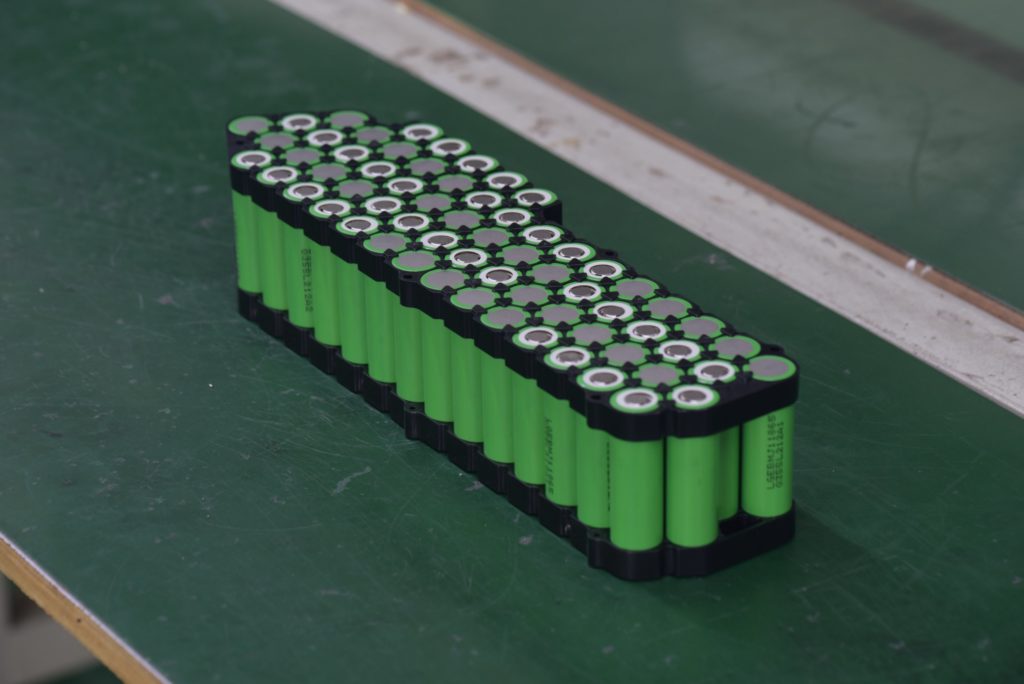
18650 cells – not spot welded 
Battery with BMS installed
Battery voltage and capacity
The amount of series connection determines the voltage of the battery. A 48V ebike battery has 13 18650 cells connected in series. In order to get more capacity, you can run these rows of 13 cells in parallel with multiple rows of 13 cells. Let’s say you have 52 x 3Ah 18650 cells, if you connect 4 times 13 cells in series and you connect those in parallel you will have a 48V 12Ah ebike battery. You might ask: How do I know what voltage my battery will be? You can assume that the average voltage of a 18650 cell is 3.7V, so if you have 13 in series: 13 * 3.7 = 48V.
The voltage of your battery won’t be stable, however. A fully charged battery has a higher voltage than an almost empty battery. A fully charged 48V battery has a voltage of 54.6V while an empty 48V battery has a voltage of around 42V. This is also the reason why your ebike has less power when your battery is at a lower charge. All ebike motors and controllers are designed to handle this changing voltage so that it doesn’t cause any problems.
BMS and Enclosure
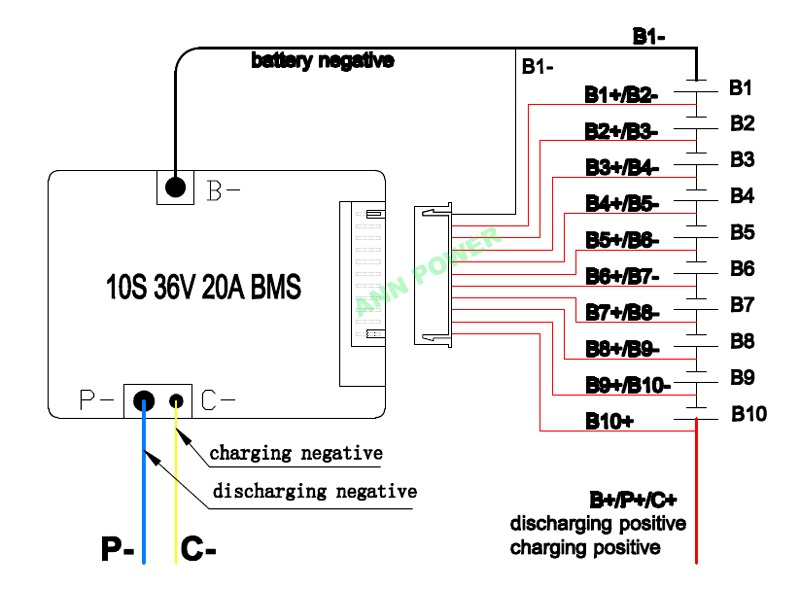
So what is the function of the BMS? The BMS protects the battery against a lot of things. It will prevent short circuits, over-discharging, overvoltage, unbalanced cells, and many more. It basically keeps your battery safe and healthy. A BMS is absolutely essential to any battery. I will not explain the exact working of a BMS, because that will be too in-depth for this post.
So to complete the battery, you need some sort of enclosure. You have bottle mount enclosures with locks, luggage carrier enclosures, or batteries in bike bags. There are many options available today, so you will be able to find a suitable enclosure for every bike. A battery of course also needs a main connector plug and a charge port. Some batteries also have battery percentage indicators on them, which is very convenient.
So how do you build an ebike battery?
You first need to buy the right amount of 18650 cells for your battery. You will need to calculate this based on your desired capacity and voltage. Then you will need a suitable BMS. BMS’s have specific current ratings, those ratings will decide how much power your battery can safely provide (assuming your cells can handle that power as well). If you, for example, want to run a BBSHD 1000 Watt 48V motor, you need to be able to run at least 25A continuous. So you will need a BMS with at least a 25A continuous rating (and cells that can output a certain amount of current). Because you will be running it at 48V (so 13 series cells) you will need a 13s BMS.
The last thing you need is an enclosure. You can choose to build your own or you can use a bike bag as an enclosure. You can also use a premade enclosure, such as a Hailong enclosure. If you go for this option you will be limited to the number of cells you can use.
Spot welding
In order to make all these components work together as an ebike battery, you will have to do some work. You will need to connect the cells together using a technique called spot welding. With a spot welder, you weld a nickel strip to the battery cells. A spot weld happens in a fraction of a second, therefore the battery doesn’t heat up at all. This is the reason why you can’t solder battery cells together. If they heat up too much, they will lose a lot of capacity. An average ebike battery needs about 300 spot weld connections to make it into a functional battery.
The second thing you need to do is wire up the BMS connections. The wires coming out of the BMS need to be soldered to the right battery connections. These wire connections, unlike the cell connections, can be soldered to the battery. There typically are just 10-15 BMS wire connections so isn’t a problem. With all these connections made, you need to add the main battery connection wires and the charge plug. The last thing you do is placing the battery in a suitable enclosure.
Is building an ebike battery yourself hard?
Building an ebike battery yourselves definitely isn’t easy. You will need a spot welder, spot welding skills, soldering skills, and generally a lot of battery knowledge. Building an ebike battery yourselves also isn’t without risks. Li-ion batteries are very dangerous and can output a lot of power. Accidentally shorting the battery can cause big fires. If you have a metal ring and you touch an unprotected battery in the wrong place, you can end up with heavy burn marks. When 18650 cells get damaged they can also burst into flames. therefore store your 18650 cells in a safe place, preferably away from any flammable objects. So if you don’t have sufficient knowledge about building batteries and you don’t understand all the risks, you should never attempt it.
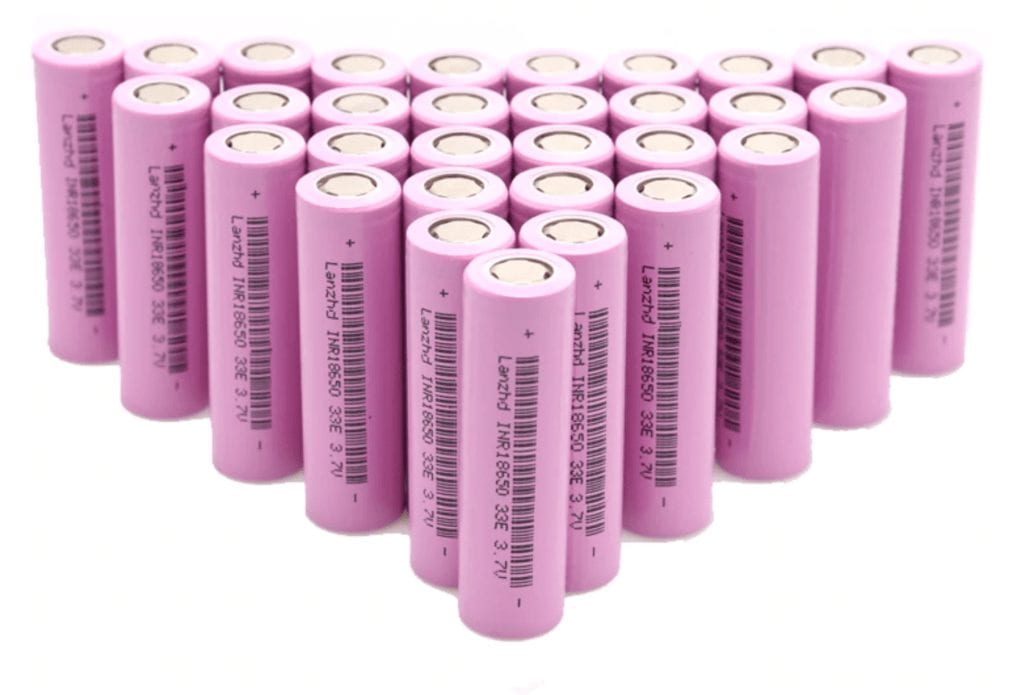
Is building an ebike battery yourself expensive?

If you are only planning on building one battery, yes, it’s expensive. Why you might wonder? Well, in order to build a battery you need a spot welder as I explained before. Spot welders can be quite expensive, the cheapest spot welders are already 150 euros or more. So the costs of the tools alone will already be very expensive. If you want to make more batteries, these upfront costs, of course, get split over the number of batteries you build.
For who is DIY ebike battery building?
DIY ebike battery building is for experienced hobbyists that have sufficient knowledge about batteries. They should also fully understand the dangers that these batteries can bring along. So if you are such a person and you want to make a crazy custom battery, go for it. You really can go crazy building a battery yourself. You can make massive capacity batteries that take up your entire bike frame or really high voltage batteries for extreme power ebikes. So if you have some special needs that aren’t available commercially, you should definitely look into DIY battery building.
So, build or buy?
The answer to this question isn’t that hard. Do you only want one battery? –> Buy. Do you want to spend little money –> Buy. Do you care a lot about safety –> Buy. Do you have special needs that aren’t commercially available? AND You have sufficient knowledge about batteries –> Build. You see that most people probably should go for buying a battery. It’s the easiest and most suitable solution for many people. Luckily there are a lot of good ebike batteries available for every type of bike that you can easily buy. I will list a couple of really good battery options and DIY equipment/parts below.
I hope that you found out which option is the best for you. Both options can lead to excellent DIY e-bikes, so you can never go wrong! Good luck with building your e-bike!
My favorite ebike batteries (global shipping)
- 48V,17Ah, Hailong brand name cells (Samsung)
- 36V,17Ah, Hailong brand name cells (Samsung)
- Hailong, multiple versions, brandless cells (cheaper)
- 36V/48V/52V Electric Bike Triangle Battery
- Luggage carrier style battery
- Locking Track Mount Bottle Style eBike Battery
My favorite DIY battery making equipment (global shipping)
- Great spot welder for beginners
- Great cheap soldering iron
- 18650 Holders
- 48V BMS
- 36V BMS
- NCR 18650
- Samsung 18650
If you have any questions, want to start a discussion, or need some support, please use the comment section below. I will respond to you within 24 hours.


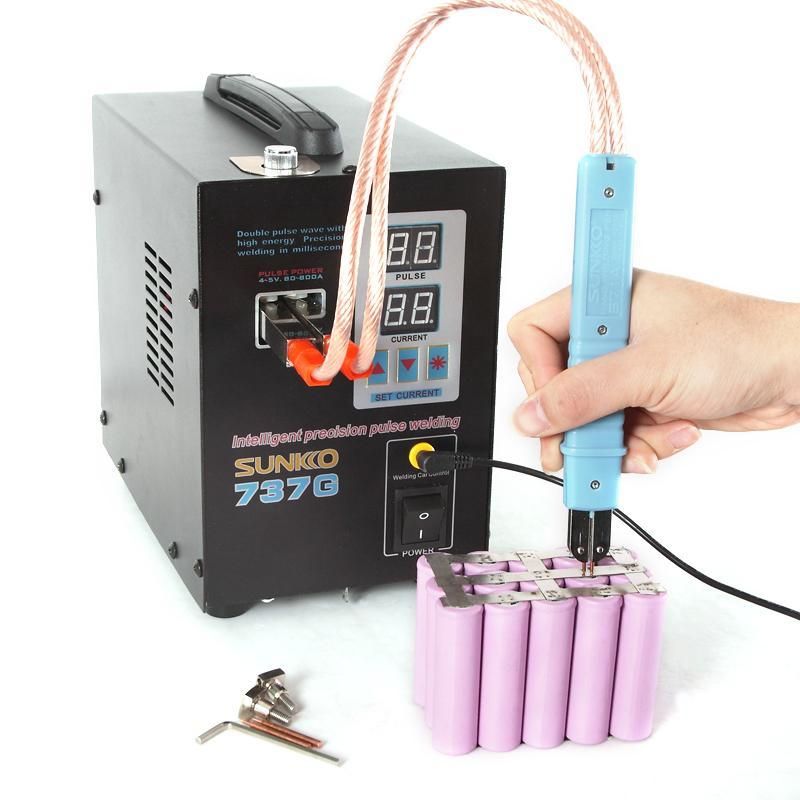
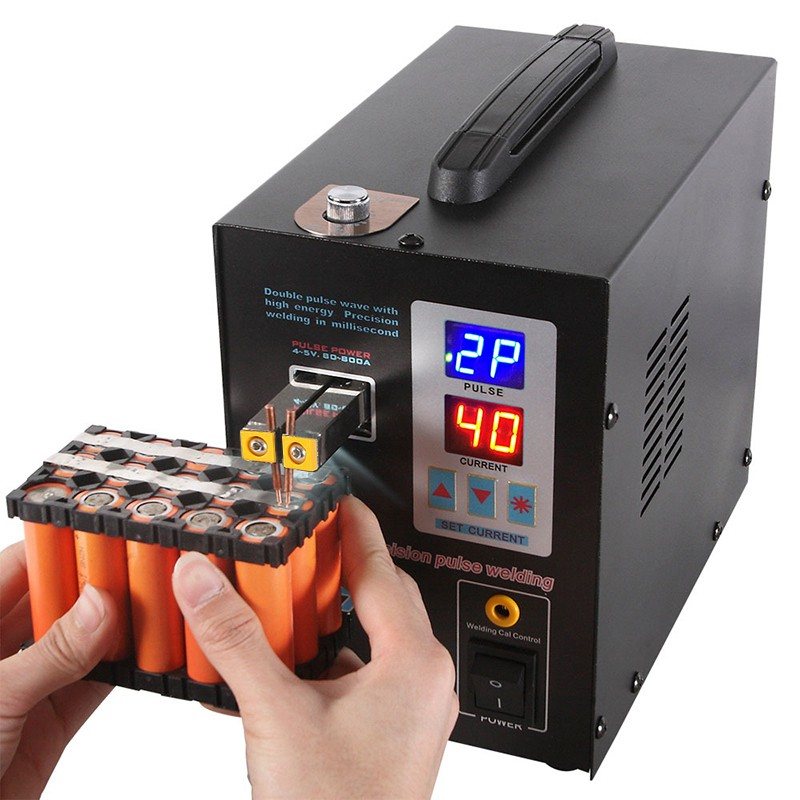


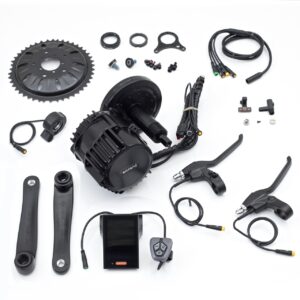
I was thinking about making one myself but I’m not to good at soldering so I’ll give it a miss. The batteries featured here are well priced, the only problem being is they don’t deliver to the uk.
Hi Robert,
On Aliexpress there a lot of well priced batteries. I think you can still get some sellers to ship them to the UK. But because of the Brexit it might be a bit harder right now.
The article was very interesting especially the series & parallel, i used to do this with speakers. Thanks for your reply anyways & I’ve only just started looking for batteries as mine is five yrs old & starting to show the strain, it charges to 54 volts (48v 16ah ) but as soon as it’s connected it drops to two thirds full. Thanks again & I’ll have a look at aliexpress, cheers rob
I’d only recommend buying battery from AliExpress if you’re willing to open up the battery on delivery and check that you were sent the right stuff. Most AliExpress batteries (especially the lower priced ones) are counterfeit. Their claimed capacity will be larger than the actual capacity, and you will almost never get big brand names (Samsung, LG, Sanyo, etc), even if the description says so. I’ve ordered a few to test the waters, and generally, I was sent batteries that are 75% as good as what I ordered. You then have to open a dispute to get some of your money back, which really isn’t hard at all. Ultimately, the batteries still end up being much cheaper than ordering locally (by about 40%), but there’s a bit more legwork involved, so, you know, value of your time.
Hi Mike,
I generally would not recommend people opening up batteries. Because it can be very dangerous if you don’t know what you are doing. I do agree that counterfeits and false claims exist on AliExpress. But in most cases, you get what is listed. Especially if you only buy from sellers that have had 100+ orders already. In those cases it is save to assume you get the right stuff. I myself have never had any quality or false claims issues when ordering from such sellers.
If you still wouldn’t trust it, you can always buy it local. Your options will be limited though and the prices will indeed be a lot higher. So AliExpress is still a better option in my opinion.
Hello my battery was stolen and the company that makes the bike is too expensive but Amazon has batteries a lot cheaper can I get a replacement off of Amazon and rewire it in or do I have to get it from the manufacturer
Hi Michael,
I cannot tell that without having more information about your bike. It however generally is really hard to swap out a battery system. I would only recommend this if you really know what you are doing and have some experience with batteries/electronics. If you don’t, I would not consider this. The chances that you will fail and have a useless bike is quite big. So I think that going with the stock battery will be your best option.
It is a radcity bike but the company does not have any more battery to sell me so it is pretty much useless now i can wait and hope they bring in more or if I am lucky find a used battery somewhere if I did want to change it can you point me in the right direction
Hi Micheal,
I would indeed focus on getting a second hand battery for your bike. This will be by far the easiest option. I cannot give you guidance on replacing it with a completely different battery system unfortunately. There are not standerd procedures for this. I would have to see the bike in person and make a plan on how to do this myself. Doing this based on pictures of the bike will not be possible. So if you choose to go for this option, I cannot help you all that much.
when a lithium battery pack has discharged from sitting to long is it smart to try to wake it up so it will charge again? using a dc power supply and low current?
Hi Michael,
Yes, you could do this. If the battery has drained to much though, there won’t be a point of return. You then won’t be able to charge it ever again. This will only occur when the battery has drained for a very long time fortunately. So in most cases, you will be able to “wake it up” again fortunately.
I am looking for someone who will build the battery with balancer for me. I can return it to the case that fits my specific ebike.
I have had my 36v rear bike rack mounted battery refurbed by a Company in Cannock England and it was not done successfully. I now am looking at having it re-done by someone else who can do a proper job. It is a flat shaped battery which has 40 x 18650 cells. All the cells where replaced by the person in Cannock and they were all new and are all 3200mha. Is it possible for you to show me the best layout for the Nickel strips to give a 36v 11AH battery. I presume it will be a 10s4p configuration. I can send a picture of the inside of the battery so that you can see the layout of the cells.
Thanks.
Rod
Hi Rod,
The configuration should indeed be 10s4p, this is the only layout that is possible to get a 36V11Ah battery.
The cells should be configured as follows:
+-+-+-+-+-
+-+-+-+-+-
+-+-+-+-+-
+-+-+-+-+-
The nickle strips should be should be in both vertical and horizontal directions on both sides. I assume this nickle strip lay-out is the same as is installed right now. If there are still unclearities, please send me an email to: edrivenet@gmail.com, including pictures of the current layout.
I understand your example thanks. Just wondering. If the 10 groups of 5 where connected in series to give 36v could another group or groups be added only in parallel not series to give a bigger amp battery with still the same 36 voltage.
That’s right, if you add one cell in parallel to each group, you would get a bigger capacity (Ah) battery. So you could make 10 groups of 6 cells in parallel for example, so a total of 60 cells. You will then have a 13.2Ah battery, if you assume that each individual cell has a 2.2Ah capacity.
I am very curious how the parallel and series set ups are calculated. I saw a video on Youtube where a guy was using 50 or so 18650 cells. He said that using the 10s5p formation would give him a 36v 11a battery. I understand that but that only uses a small number of cells. What I cant understand is when all the other cells are connected in the 10s5p formation, surely the battery will now be stronger. How can it still be a 36v 11a battery. I will be quite happy to pay for a lesson or so on the subject. I am 80 years old so will not be building a battery but my engineering brain needs to be answered. Rod rodpickering@hotmail.com
Hi, I don’t exactly understand what you don’t understand, but I will try to explain how you should see it:
A 10s5p battery indeed uses 50 individual cells (18650). You will now create 10 blocks of 5 cells in parallel. So you connect the positive’s and negative’s of 5 cells together, you will do this 10 times, so that you have 10 of these blocks of cells. Each block will now have the capacity of 5 times the individual cell capacity. In case of an 11Ah battery, each cell should be 2.2Ah. So if you put 5 in parallel, the individual capacity of each cell will add up to 11Ah per block. So now you will have 10 blocks of cells with a capacity of 11Ah per block, the voltage of each block will be 3.6V. This is the nominal voltage of a single cell (or cells in parallel).
You will now connect those 10 blocks in series. This will give you 10 times the 3.6V, because in series, you add the voltage. This will result in a 36V, 11Ah battery in total.
Cells in parallel: capacity adds up.
Cells in series: voltage adds up.
The concept is quite basic, so I hope I explained it clearly and you understand it now. If not, don’t hesitate to ask.
If you have any questions, please leave them in this comment section. I will try to answer them within 24 hours.